The PowerWalker VI 1500 CSW UPS Review: Trying For True Sinewave on a Budget
by E. Fylladitakis on April 13, 2022 8:00 AM EST- Posted in
- Cases/Cooling/PSUs
- UPS
- PowerWalker
- BlueWalker
- 1500VA
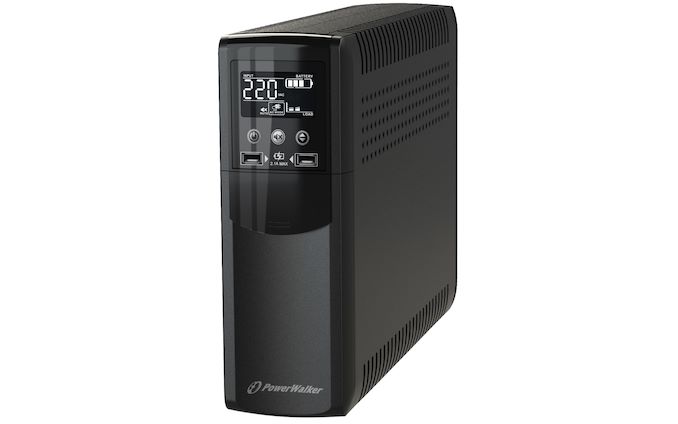
Editor's Note: Today we're kicking off a new review category for AnandTech: Uninterruptible Power Supplies. These devices are becoming increasingly common as desktop users are looking for laptop-like reliability. All the while, it's also an area that we feel is lacking in good, EE-enlightened systematic reviews. So our multi-talented power guru, E. Fylladitakis, is applying his skills to UPSes. As this is a new area for us, please let us know what you think in the comments below!
While Uninterruptible Power Supplies are hardly a new thing in the PC space, the tried-and-true battery backups for desktop PCs have been undergoing a resurgence in popularity in recent years. Improvements in power delivery technology such as GaNs have been reducing costs and improving reliability, and meanwhile lithium-ion batteries, with their much greater energy density/lower volume, are starting to make inroads on the UPS market as well. All the while, with laptops outselling desktops in the consumer PC market, a PC that doesn't shut itself down during a power outage is becoming the norm, rather than the exception. So what better time is there to take a look at UPSes?
To kick off our inaugural UPS review, we're starting with a 1500VA unit from BlueWalker. BlueWalker is a company that originates from Germany and specializes on the design and marketing of power-related equipment. The company was founded in 2004, making it one of the oldest household UPS/AVR manufacturers that still exist to this date.
BlueWalker is marketing their retail products under the PowerWalker brand name and has a very wide portfolio of both hardware and software products available. For today’s review, we are taking a look at the PowerWalker VI 1500 CSW, a 1500VA/900W UPS that boasts a true sinewave output.
| PowerWalker VI 1500 CSW | |||
| Power Capacity | 1500VA/900W | ||
| Output Voltage | 230 VAC | ||
| Input Voltage | 170-280 VAC | ||
| Type | Line Interactive | ||
| True Sinewave | Yes (ish) | ||
| Battery | Lead-Acid, 2x 12V/9Ah | ||
| Full Load Backup Time | 3.5min | ||
| Half Load Backup Time | 10min | ||
| Battery-Backed Sockets | 2 (Type F) | ||
| Surge Protected Sockets | 2 (Type F) | ||
| USB-A Outputs | 2 (2.1A) | ||
| Ethernet Surge Protection | Yes | ||
| LCD Display | Yes | ||
| Dimensions | 99 x 280 x 410 mm | ||
| Weight | 13.1 kg | ||
Given that BlueWalker is a German company, there should be little surprise that the PowerWalker VI is geared towards the European market. The UPS only outputs at a nominal 230V, and similarly, is only designed to accept voltages around that range (sorry, Americans!). Past that, this specific version comes with 2 battery-backed Type F sockets, as well as another two sockets with just surge protection. With 216 Wh of lead-acid battery capacity, it's rated to run a full load for a few minutes, stretching into the double-digits at a half load or less.
Of particular interest with this UPS is the price: true sinewave units have historically carried a significant price premium, but BlueWalker isn't charging nearly the same premium as true sinewave UPSes from other major manufacturers, making the PowerWalker VI 1500 CSW a much cheaper UPS – and at around €180, one that's popular on the market as a result. But can it live up to the same high power delivery expectations without the same wallet-busting price? Let's find out.
The PowerWalker VI 1500 CSW UPS
We received the PowerWalker VI 1500 CSW in a relatively simple cardboard box, with the heavy unit well-protected by thick packaging foam pieces. Inside the box, we found a CD with the compatible monitoring software, thorough manuals in several languages, and a USB cable.
The PowerWalker VI 1500 CSW is a tower-style UPS with an LCD screen at the front. Measuring only 410 mm deep, 100 mm wide, and 280 mm tall (16.2 in × 4 in × 11 in), it is very compact for a unit with that high of an output. There are also two USB charging ports at the front, right under the LCD screen.
The LCD screen, once turned on, will show the basic electrical figures of the unit, such as the voltage, the load, and the remaining battery time. It stays off most of the time and the user needs to press the power button momentarily in order to turn it on.
At the rear side of the tower, we find four power sockets. We are testing the version with the four Schuko (Type F) sockets, but BlueWalker also offers this unit with UK and FR sockets, plus a version with eight IEC socket.
Note that only two sockets offer battery backup, as the other two are for surge protection only. In fact, having just two sockets connected to the unit’s battery backup output is an atypically low number of powered sockets for a 1500VA UPS, as we usually see more.
Along with power protection, there is also a non-destructive circuit breaker and an Ethernet surge protection path (input-output jacks) available with the PowerWalker. Finally, there is a fan that will only turn on when the unit is running on batteries, charging its batteries, or in auto voltage regulation (AVR) mode. The AVR mode essentially has the unit running on grid power but forces the AVR circuit to operate, which may be useful in some situations where the power grid is energized, but very unreliable.
More than half of the front fascia is a door that must be removed in order to access the battery compartment. It is held in place by two small screws at the bottom side of the unit. Once removed, a very large connector can be seen that connects the batteries to the main unit. This needs to be unplugged in order to remove the batteries. If the batteries need to be replaced, the wiring must be unplugged and transferred to the new batteries. We found two Leoch 12V 9Ah batteries in the unit, connected in series (24V 9Ah output). Leoch is a Chinese manufacturer of batteries that is amongst the largest on the planet and whose products are considered to be of fairly good quality.
Cracking open the unit’s body, we can see the unit’s large transformer and circuitry. The transformer actually is not very large for the 1500 VA unit and the amount of cooling it receives from the fan is fairly low. This will not be a problem for the stock unit, where the batteries will likely last just a few minutes, as there will not be enough time for the transformer to overheat. Modifying the unit’s batteries to increase its autonomy in any way without greatly upgrading its cooling capabilities would be, however, nothing short of suicidal.
The power circuitry left us with mixed feelings. The relays are supplied by Golden Relays, a reputable manufacturer, yet the capacitors are supplied by Aishi and Jamicon, suppliers that are considered to be mediocre. Eight IRF3205 MOSFETs generate the output when the unit switches to its batteries, MOSFETs that are proven to be reliable but, having been released well over two decades ago, are nowadays very cheap and their performance is relatively poor compared to more modern MOSFETs. The workmanship is very good but the circuitry layout is fairly outdated.


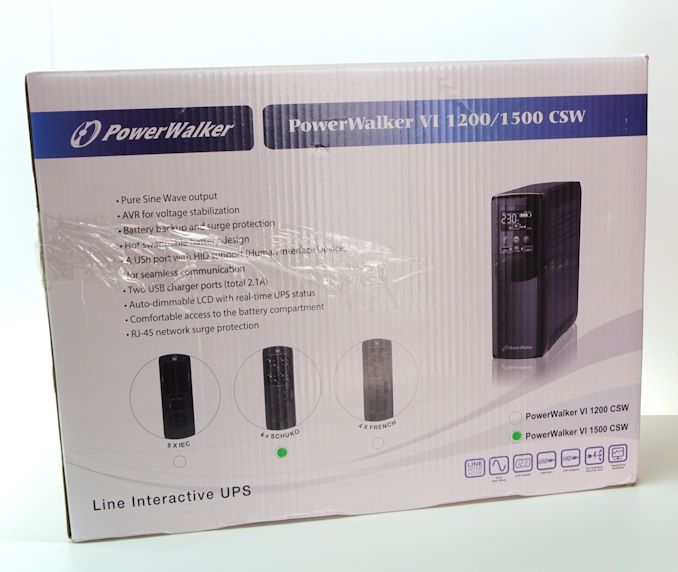

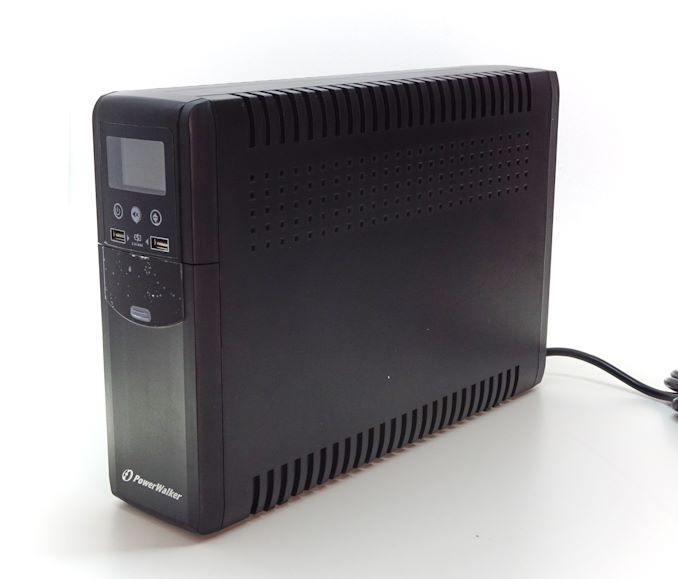
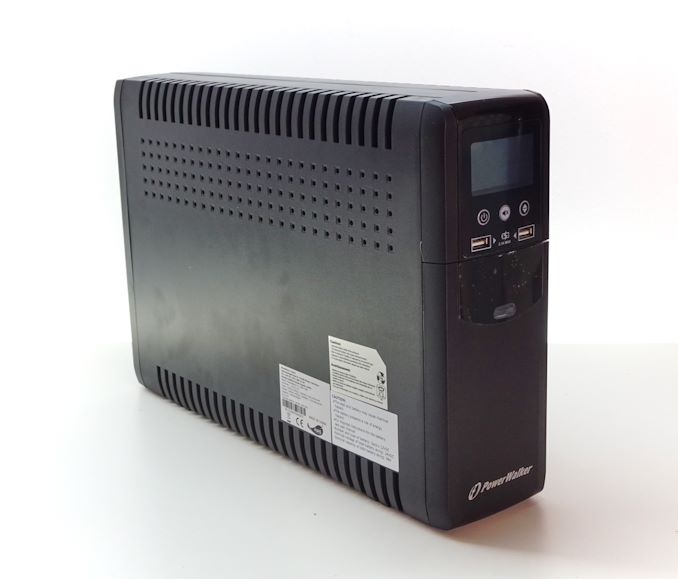
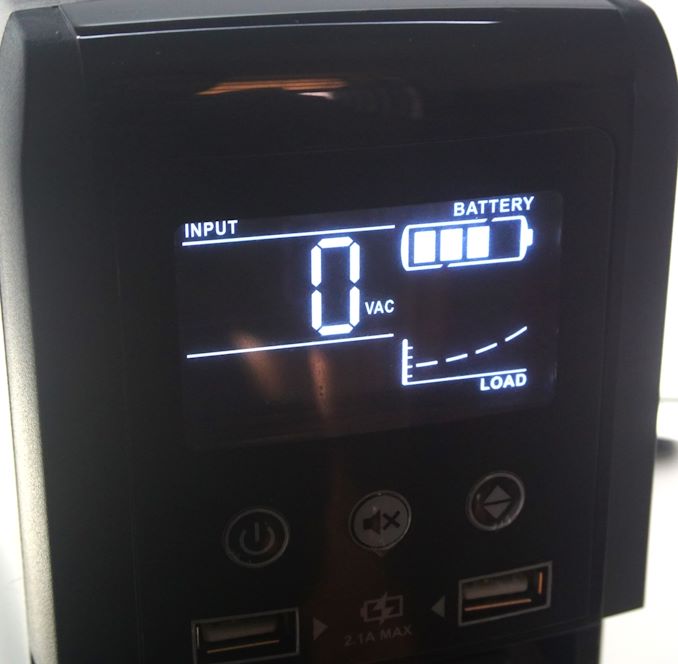
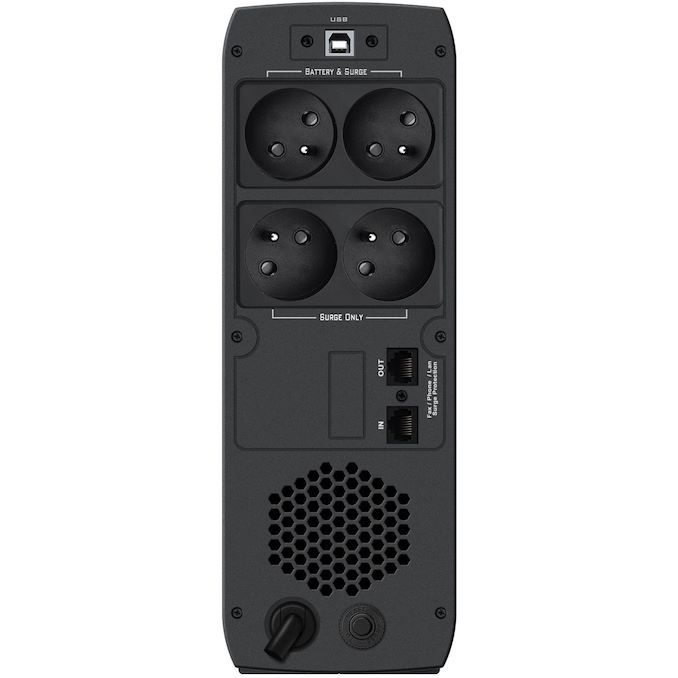
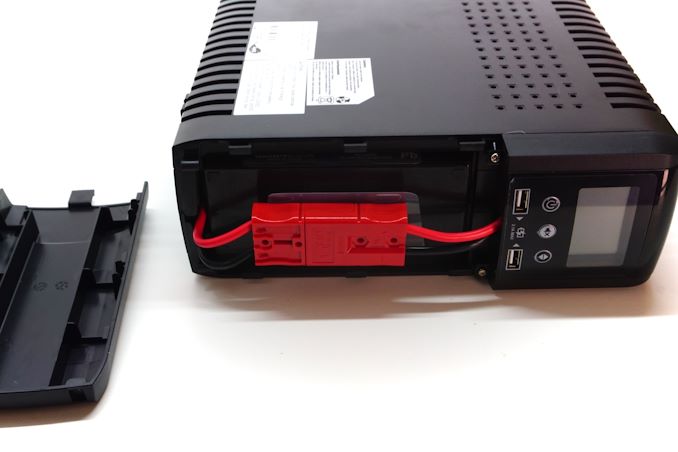
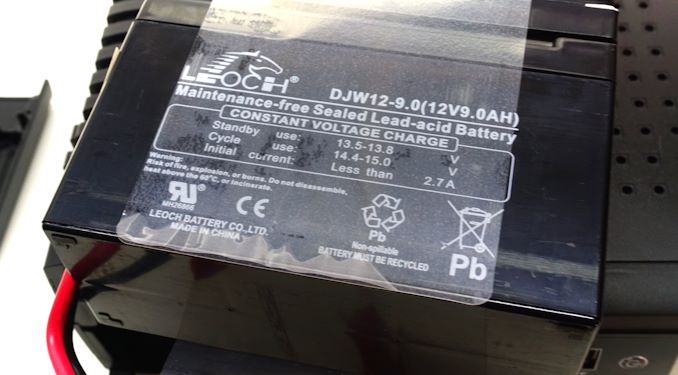
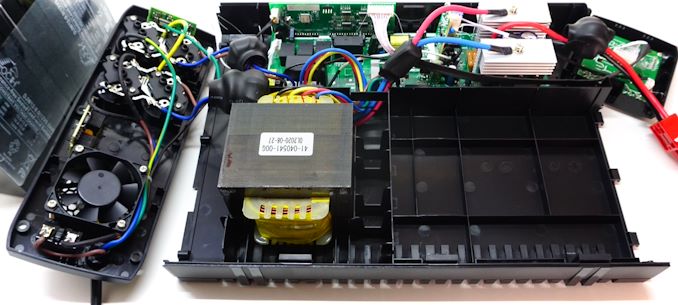
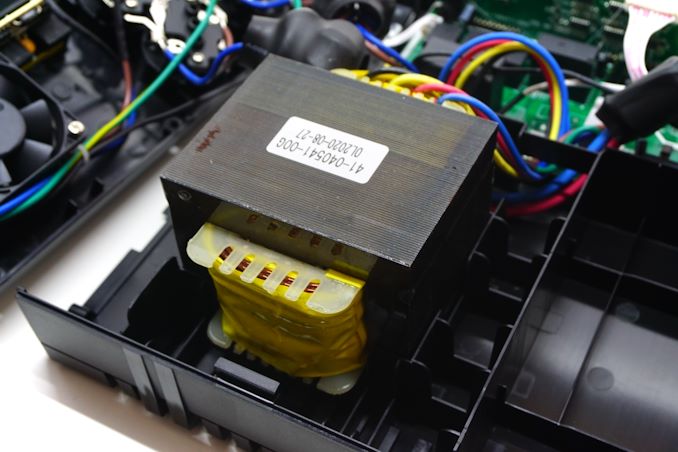
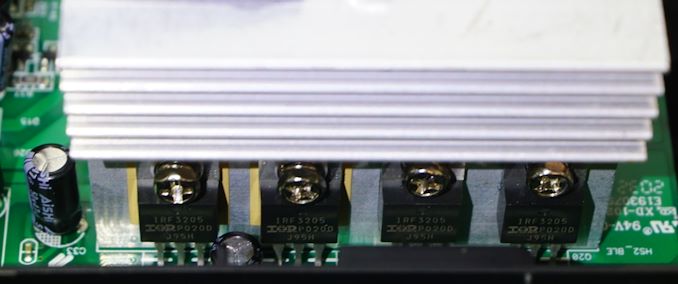
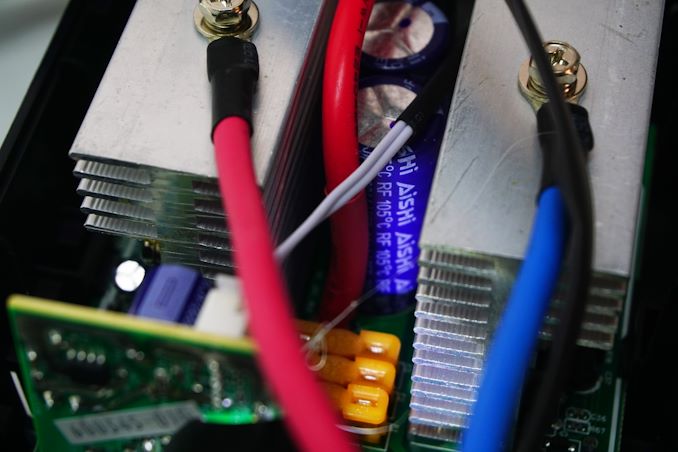
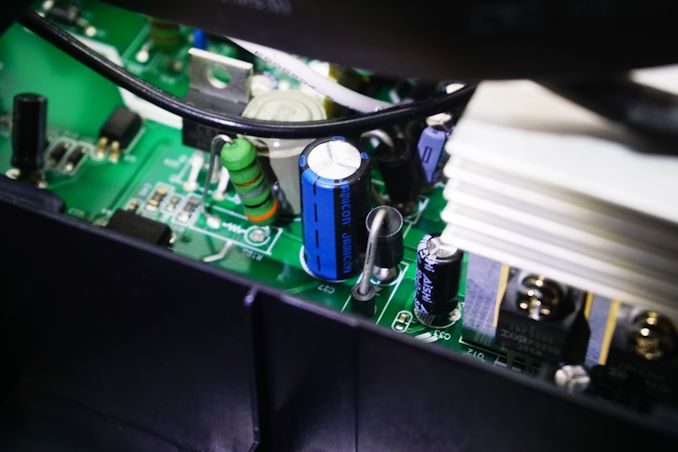
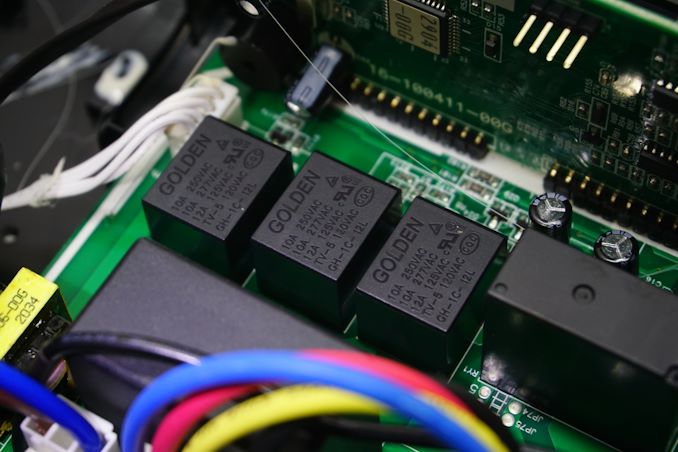








107 Comments
View All Comments
techjunkie123 - Wednesday, April 13, 2022 - link
UNLIMITED POWAAAAHHHHHsupercaliber - Wednesday, April 13, 2022 - link
Love this category of reviews--keep them coming! (also intrigued about mentioned Li-ion based as I need small form factors)mode_13h - Wednesday, April 13, 2022 - link
With lead-acid batteries, a trick I've done a few times is to use them for jump-starting a car. Just make sure you're really using a ~12 V cell, as some UPS batteries are actually 2 wired in series.ydeer - Wednesday, April 13, 2022 - link
I appreciate the review. Overall efficiency at different load levels and standby power consumption of the device itself would be of interest to me, with power prices developing as they are.ydeer - Wednesday, April 13, 2022 - link
Also, would it be safe to replace the built in battery with a LiFePO4 battery of the same size?Many battery vendors now offer LiFePO4 in lead-acid form factors, advertised as drop-in replacements since they have a built in BMS that makes them compatible with regular chargers.
They are lighter, can't leak and supposedly last far longer (in both time and cycles).
I noticed that they have much lower discharge values than lead acid/AGM batteries of the same size, so I doubt they would be safe to use at full load, though the BMS should cut off there. Perhaps something the author could investigate in a future content piece.
t.s - Wednesday, April 13, 2022 - link
I've modified a few APC UPS to use LFP, and so far still good. BMS is a must for safety. And if one planning to use >50 AH battery for longer usage, remember to put a reliable fan that blow directly to the transformer.A pity that there's almost no LFP battery in market.
DanNeely - Wednesday, April 13, 2022 - link
There're a few UPSes with lithium batteries of some sort (never dug deep enough into the specs to find the exact chemistry). They're bafflingly expensive though.ex APC's 1500VA model is $1800 on amazon.
But if you look at the specsheets for their conventional lead acid ones, the 1500VA model can provide 120W for 1 hour. 120Wh is only about 20% more capacity than a max size laptop battery; so UPSes using them shouldn't need to be crazy expensive. Once you factor in the far lower shipping cost I wouldn't be surprised if the delivered price actually ended up being cheaper.
Kamus - Thursday, April 14, 2022 - link
Yeah, those "bafflingly expensive" UPS companies are going to be driven out of the market soon enough. By the likes of Ecoflow, Bluetti, and other endless "solar generator" brands (anker just got in on the game too)They are selling products that instead of just giving you time to quickly shut down, will allow you to go on for hours of uptime if the power outage goes on for a long time, and they all allow you to charge the "UPS" with solar panels to further extend your uptime for a very long time. (with a big enough system, you can make your computer independent from the grid)
These companies are all using either ternary batteries, or LFP batteries. The ones with LFP batteries are monsters that you can cycle every day, for years without any noticeable degradation. (those would be the ones to use if you want an offgrid computer)
UPS companies are being disrupted and they don't even know it yet, I wouldn't be surprised to see many of these file for bankruptcy in the coming years, as these companies get their UPS capabilities more polished (some don't switch fast enough for critical loads yet) and up their marketing game as "UPS" instead of just "solar generators"
t.s - Thursday, April 14, 2022 - link
True that. For countries that have more day than night, you can go off grid if planned right using solar panel and LFP. My dream is having a DC home. So there's no need to convert DC to AC. Just have to use boost or buck converter to up or down the voltage. Better efficiency and fewer energy loss.dersteffeneilers - Saturday, April 16, 2022 - link
So you are planning to install new outlets? Or just with an armageddon of extension cords?I think it makes more sense to spend the money to have a electrician hook your battery up to the grid, if you live in a place where your output can get adjusted by grid demand automatically, it can pay for itself very quickly.